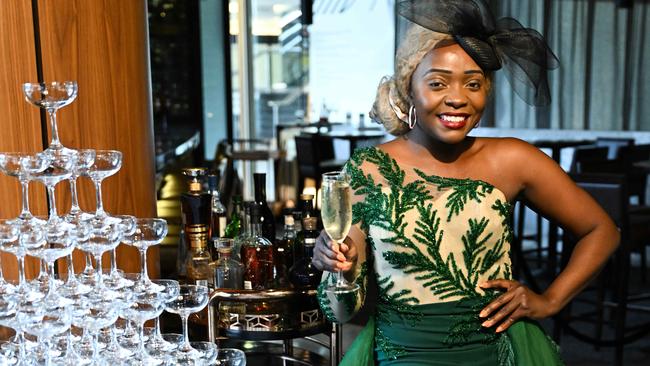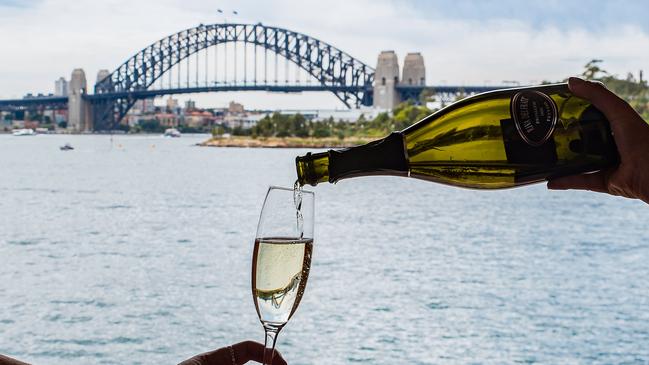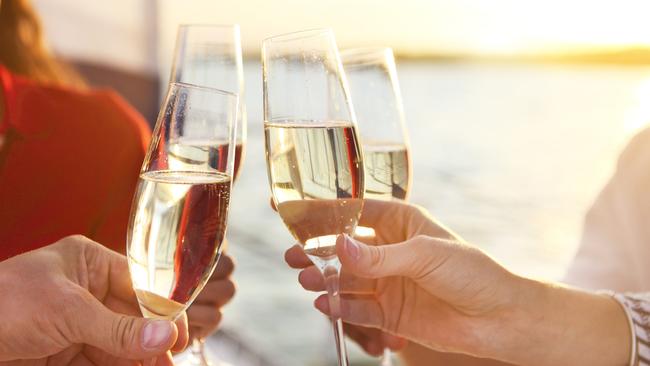Australia the sixth-largest champagne market in the world
Australians have enthusiastically embraced champagne since the end of Covid-19 restrictions, propelling the nation to become the sixth-largest champagne market in the world.

Australians have enthusiastically embraced champagne since the end of lockdowns and Covid-19 restrictions, propelling the nation to become the sixth-largest champagne market in the world.
A record 10.5 million bottles of French bubbly were shipped to Australia in 2022, up 6 per cent, with Australian consumers becoming more educated and increasingly willingly to spend more when filling a flute.
Latest figures from Comite Champagne, the regulatory body that represents the houses, growers and co-operatives of the Champagne appellation in France, show that the value of the Australian champagne market increased by 17.7 per cent for the year, representing a turnover of €188m ($310m).
And despite only a small population relative to some of the other giant champagne drinkers, Australia now ranks as the sixth-biggest champagne export market and is closing in on much larger nations such as Japan, Germany and Belgium, which rank third, fourth and fifth, respectively.
It is the first time Australia has ranked sixth by volume as well as value in terms of champagne shipments, underlining that shift to higher priced champagne brands by local drinkers.

Australia is still a minnow compared with Britain, which in 2022 bought 28 million bottles.
But all nations are mere beginners, compared with France that kept 138.3 million bottles for local consumption.
Brut non-vintage style remains the most popular category of champagne among Australian drinkers and made up 88 per cent of all exports. Analysis of 2022 shipments revealed that all champagne categories grew in volume when compared with 2021, including rose and vintage champagne.
However, low-dosage champagne is proving to be the new champion of champagnes for many local drinkers. This style has between zero and six grams of sugar per litre added as a “dosage” at the final point of a champagne wine’s production. A champagne with lower dosage is often described as “lighter, drier and fresher” and is becoming the style of champagne most recommended in restaurants for its superb pairing with food.
Shipments of low-dosage champagne reached 280,000 bottles in 2022, almost double those of 2021.
“I believe that our market is actually becoming more and more educated about champagne and are looking for something different,” Champagne Bureau Australia director John Noble said. “Low-dosage champagne is really a niche area for champagne lovers, and these lower-dosage champagnes are much drier and it is the trend that is appealing to our palate.”
Champagne is no longer just for weddings, births or special occasions. “During the lockdowns and the last few years of the health crisis we attributed this idea of champagne no longer just being looked at for simply weddings and celebrations, it was synonymous with celebrations, but globally I think there has been a shift,” he said. “The idea of ‘champagne on a Wednesday’, to have it midweek, because it made you feel good, tasted good, (is taking off).
“And Australians have this casual approach. So, if you go to a barbecue at a friend’s place on the weekend, champagne is on show and you don’t have to wait for the grand occasion to have champagne, you can drink it at a picnic.”

Amanda Yallop, group wine director at FINK, whose upmarket restaurants include Quay, Bennelong and OTTO, said her customers were certainly drinking more champagne with a big push to more premium brands and prestige cuvee (blends).
“I think over Covid people learnt to just enjoy the moment, and why not do something special such as really expensive sushi, wine or champagne and just enjoy this moment and enjoy it together. Why not?”
Customers were ordering a champagne bottle – rather than just a glass – to enjoy before turning to a wine for the meal. Her restaurants were experiencing strong demand for low-dosage styles.
“We certainly sell a substantial amount of champagne by the glass, but people are now more willing, where in the past a bottle would have to be shared by four people, now easily a table of two will order a bottle of champagne.
“Blanc de blanc champagne is always very strong, there has been increased demand in rose and low-dosage champagne. And I think that when people drink champagne in a restaurant, guests are the most informed they have ever been.”
Tim Carroll, director of buying and merchandise at Endeavour, which owns the nation’s largest liquor retailer Dan Murphy’s, told The Australian the love of champagne had re-emerged since the end of pandemic restrictions.
“Champagne is traditionally the drink of choice for celebrations and special occasions, to share with friends and family,” he said.
“Australians are inherently social people, and coming out of the pandemic, we have seen our customers embrace every opportunity to celebrate, and this has driven growth in champagne and sparkling wine.’
Dan Murphy’s stocks more than 150 champagnes, as well as more than 400 sparkling wines, with recent price hikes for many champagne labels pushing some more cost-conscious consumers into the sparkling wine category.
“Some customers are more value-conscious at the moment, which is understandable, so they are shifting to good-value sparkling wines. Prosecco and sparkling rose are becoming more popular, and are helping build engagement with the broader sparkling wine category through versatility and appeal to different customer tastes.”








To join the conversation, please log in. Don't have an account? Register
Join the conversation, you are commenting as Logout